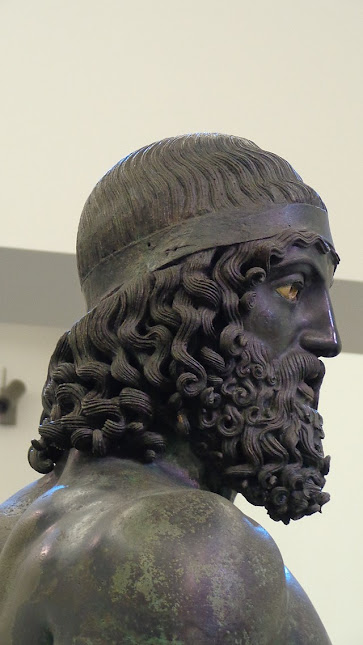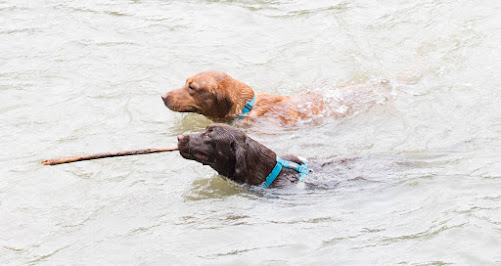Easter
eggs and rabbits . . . or hares?
Why does
Easter fall on a different date every year? Easter is a moveable feast because
it is decided by the lunisolar calendar, which aligns the moon’s phases with
the sun’s position in the sky. All clear? Jolly good!😉
The date
of Easter Sunday is dependent on the first full moon after the spring equinox,
which this year, 2024, was on Wednesday 20th March. The first full
moon after this date is Monday 25th March and the first Sunday after
that is 31st March.
However, if the first full moon after the vernal
equinox were to fall on a Sunday, Easter Sunday would be celebrated on the
following Sunday. The Jewish holiday of Passover also follows the lunisolar
calendar, but Islam follows a purely lunar calendar, so that holidays like
Ramadan occur at different times and seasons of the year.
Eggs are
a symbol of renewal and Easter in the Christian church celebrates the
resurrection of Christ. That connection is quite clear, but why rabbits?
Traditionally, it was hares that were associated with the resurrection, but
over time they were displaced by rabbits.
Hare on a mugWhen
farming was not as intensive and mechanised as it now is, ground nesting birds
like lapwings were more common and numerous. When hares seemed to ‘disappear’
into their forms in the fields, people coming upon eggs laid by lapwings and
the like, would think the hare had laid the eggs and so the association between
hares, later rabbits, and eggs was made.
The brown
hare (Lepus europaeus) is one of the largest hares, but it is not native
to Britain. Like the rabbit and the edible dormouse (Glis glis) it was
introduced by the Romans as a source of food. The Romans ruled Britain for more
than 350 years and had a lasting influence on life on this island.
Britain’s
only native hare is the Mountain hare (Lepus timidus) which is also
known as the blue hare, the white hare and the snow hare, among other names. It
has been in existence for at least 130,000 years. The Irish hare (Lepus
timidus hibernicus) is a subspecies and is found only in Ireland. It is
30,000 years old.The
Mountain hare is greyish-brown, called blue, and can be seen in Scotland and
the North of England. In winter, its coat turns white to allow it to camouflage
itself in the snow. It is most noticeable in spring, when any snow may have
melted but its coat colour has not reverted. Irish hares do not usually turn
white in winter but retain their reddish-brown coats.
Hares are
protected under the Wildlife and Countryside Act of 1981.
Hare
coursing remains a popular ‘sport’, one for which greyhounds, lurchers and
other gaze hounds are used. The Hunting Act of 2004 made it illegal to hunt
hares with dogs, followed by the Police Crime Sentencing and Courts Act 2022 making
it a criminal offence to use a dog to search for a hare. Police officers can
stop and search vehicles if they suspect the act has been breached.
Hare on the other side of a mug
It is also
illegal to trespass on land with the intention of coursing hares, attend or assist
a hare coursing event, or allow your land to be used for hare coursing. Despite
all the legislation and the threat of the imposition of fines and prison
sentences, illegal hare coursing continues across the country.
There are
superstitions attached to hares, as to most living things. The hare is
considered a creature of magic and mystery, the Celts associating both it and
the rabbit with the full moon, night and the supernatural. It was believed to
be a messenger of misfortune. Sailors and fishermen would not mention it by
name and would not set sail if they saw one for fear of bad luck, for a hare
was thought to cause storms. If a farmer saw a drove of hares in March, he
would be sure his farm would not prosper that year. Conversely, others believed
they would have good luck if they saw a hare.
Moon gazing hareWilliam Cowper
(1731 – 1880) was an English poet and writer of many hymns for the Church
of England. He suffered great depression and many nervous breakdowns, but found
solace through adopting three leverets, all males, that he called Puss, Bess and
Tiney. His letter to ‘The Gentleman’s Magazine’ in 1784 gives an account of his
experience as a keeper of pet hares.






















%20(1).jpg)
.jpg)


























.jpg)